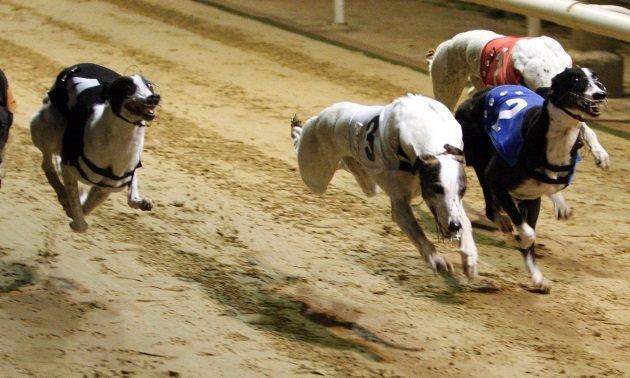What is a reversed forecast bet?
< Return to what is a straight forecastGo to what is a combination forecast >
What is a reversed forecast bet?
· Similar to a straight forecast, a 'Reversed Forecast' consists of two selections, which you believe will finish in first and second, but it does not matter in which order they finish in, just as long as the two selections occupy the first two places. This bet has two elements to it, and as such, a £1 Reverse Forecast would come to a total stake of £2.
A reversed forecast bet - sometimes abbreviated simply to RF - is almost exactly the same as a straight forecast bet, but with one notable difference. While in a straight forecast bet you have to correctly predict the participants finishing first and second in the exact order they finish, in a reverse forecast bet your two selections can finish either first or second and you still win.
The stake in a reversed forecast bet is double that of a regular bet. So, if you wanted to bet £20 on each selection, you would actually be betting £40. This is because you are essentially placing two bets on your selected race participants. One bet is on Selection A to finish in first and Selection B to finish in second, and the other is on Selection B to finish in first and Selection A to finish in second.
As there is a greater winning option available to the bettor, reversed forecast bets are simple to place and are less challenging to win than straight forecast bets. For this reason, they are highly accessible bets for people who just starting to understand betting. However, some knowledge of the runners will be required as bettors are selecting two participants who need to have a good chance of finishing in the top two, rather than just one.
Reverse Forecast Bets
As is the case with straight forecast bets, the size of the field is an important consideration for anyone considering placing a reverse forecast bet. The bigger the field, the higher your chance of a big return will be because it's more difficult to select the first two finishers in this scenario. Likewise, if the field is smaller it becomes easier to predict those first two, so the chances of earning high returns are lower.
This means that a reverse forecast bet placed, for example, on a horse race with more than 15 runners is going to deliver better winning returns than one that has fewer than 10 runners. The odds betting companies offer will differ depending on the scenarios to reflect this. A larger field is likely to provide better prices than a smaller field.
To apply the principles of a reversed forecast bet to an example scenario, you could place this kind of bet on a greyhound race and select greyhound 5 and greyhound 8 as your two picks. If you wanted to place a £5 stake per selection, the figure is doubled to £10 as, under the rules of a reversed forecast bet, you are placing two bets:
- The first bet has greyhound 5 finishing in first place and greyhound 8 finishing in second place
- The second bet has greyhound 8 finishing in first place and greyhound 5 finishing in second place
If either of these scenarios were to come about, you would win your bet.

In some scenarios, one of the selections in your reverse forecast bet could be declared a non-runner and be ruled out of the race. If this happens, your bet is still intact, but it becomes a single at the SP of the remaining selection. In other words, if greyhound 8 were to be declared a non-runner, the reversed forecast bet would become a single on greyhound 5 to win the race. If that happens, you win your bet under the terms of a traditional single bet.
Other terms and conditions apply for other scenarios like this, so it’s well worth checking with your bookmaker to understand the ramifications of all possible consequences before betting.
Variations of reversed forecast bets
There are a number of different kinds of forecast bets, which vary slightly in terms, in comparison to the reversed forecast bet. To avoid confusion, it is important to understand these differences.
A straight forecast bet is ‘stricter’ than a reversed forecast bet. Under this kind of bet, the bettor must predict first and second in the exact order they finish. If the selections are reversed or if one of the selections does not finish within the top two, the bet is lost.
A combination forecast bet is more open, more complicated and more expensive to place. In a combination forecast bet, you are betting on a wide variety of potential outcomes with three participants rather than the two that are available in a straight forecast bet and a reversed forecast bet.
For example, along with greyhound 5 and greyhound 8, a combination forecast bet would allow you to include a third greyhound – in our example greyhound 10 - and bet on the possible permutations of these runners finishing in the top two. This would therefore lead to six possible outcomes.
- In the first, the bet states that greyhound 5 will win and greyhound 8 will finish in second place
- In the second, the bet states that greyhound 5 will win and greyhound 10 will finish in second place
- In the third, the bet states that greyhound 8 will win and greyhound 5 will finish in second place
- In the fourth, the bet states that greyhound 8 will win and greyhound 10 will finish in second place
- In the fifth, the bet states that greyhound 10 will win and greyhound 5 will finish in second place
- In the sixth and final outcome, the bet states that greyhound 10 will win and greyhound 8 will finish in second place
The cost of the stake works in a very similar way to the one placed for a reversed forecast bet. As the bettor is not just placing one bet but six, the stake is multiplied by six. This means that if the stake is £5 per selection that figure is multiplied six times and becomes a stake of £30.
In addition to these kinds of bets, you may hear the term reversed forecast bet mentioned alongside phrases such as Exacta, Perfecta, Exactor and Quinella. These terms are not generally used in the UK. They are North American terms used to describe bets that are very similar in nature to straight forecast bets and reversed forecast bets.
Exacta, Perfecta, Exactor bets are the same as a straight forecast bet, with the bettor having to predict the first two in the exact order they finish. A Quinella bet is the same as a reversed forecast bet in which the bettor can predict the first two and the bet will pay out regardless of which order they finish in.
< Return to what is a straight forecastGo to what is a combination forecast >
Plus, don't forget to check out our bet calculator, where you can calculate your winnings.















